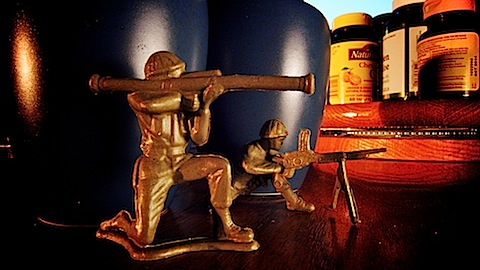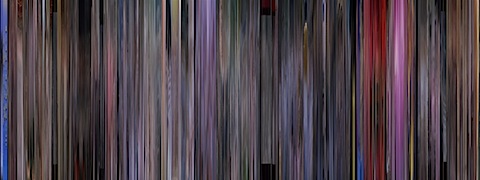Below shows that the best shot isn’t the first one you take. Iteratively and progressively, you build on what worked, and use your knowledge to make it better. Also, stuff happens in post-processing of images. As an aside, I prefer to shoot in aperture priority mode to control my depth of field, and I’ll comment on settings for folks, if they’re into that sort of thing.
This is with a bare flash (Vivitar 285HV wide zoom, 1/16th power and camera at f 8, aperture priority). The flash is too bright, nuking the army dude with light. Need to soften the light a bit.
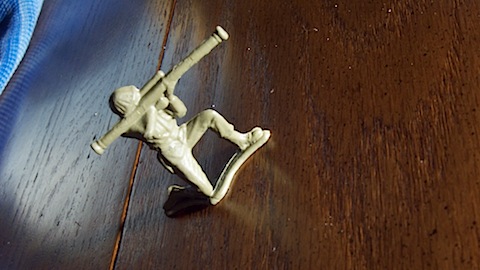
A few shots later, I put a Wescott mini-Apollo softbox over the flash. The softbox is about 10″x6″ and fits on the head of the flash well. The light is softer and direct, but the image needs something more than an army guy on a table.
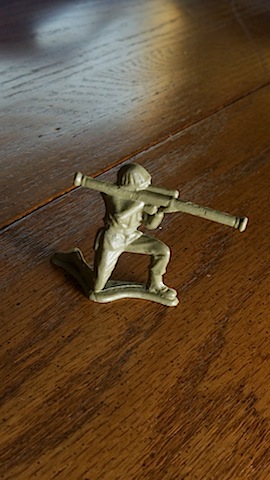
They defend stuff, right? So I grabbed the salt and pepper shakers, letting the title of “defending the shakers” float in my mind. Ok, it’s somewhat interesting, but white light seems a bit much.
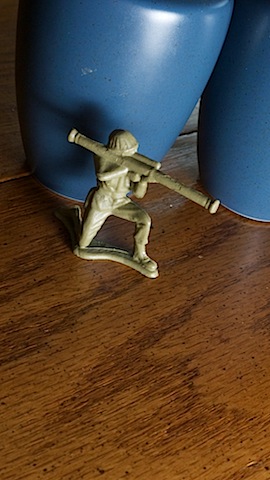
I took the softbox off the flash and added a warming gel and reattached the softbox. I really like this…
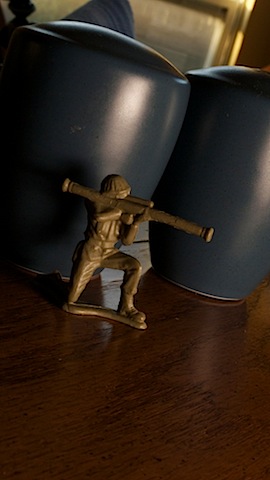
…and let’s punch it up a bit in post-processing, changing the levels, tweaking the curves and upping the saturation.
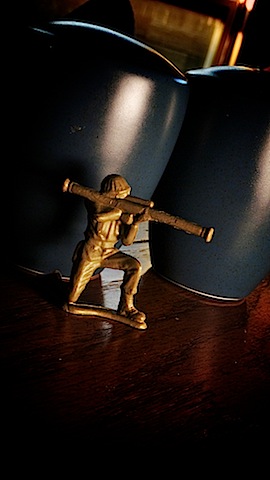
Continuing on, I added a machine gunner buddy. Cool, but what if I added some light behind them?
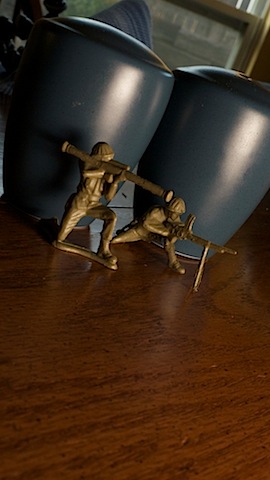
I placed a LumoPro 160 (1/8th power, zoomed to 85mm, placed a foot from the army guys). I should have known it would have been too hard (it’s like a flash grenade went off).
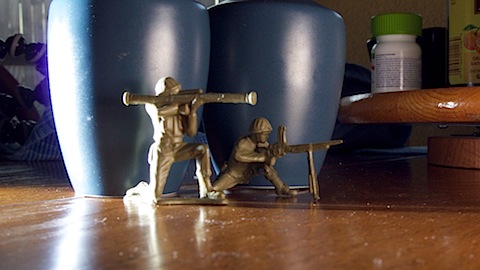
I moved the LumoPro to a counter top, so now that flash is about 6 feet away with the Vivitar still sitting pretty. Like earlier, the white light isn’t doing it for me.

I placed a warming gel on the LumoPro, took a few shots, and this is the one I like. Sharp and warm and with a good angle.
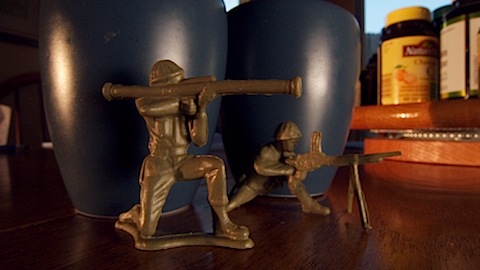
…and now punched up in post-processing like above.
